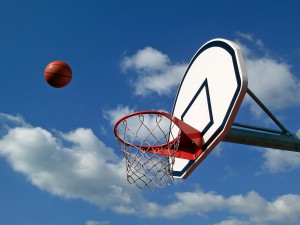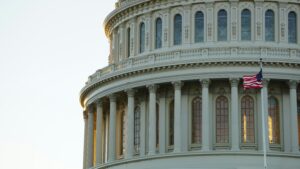October 2014
 On August 8th, 2014, California Federal District Court Judge Claudia Wilken handed down her decision in Ed O’Bannon’s antitrust case against the National Collegiate Athletic Association (“NCAA”). Mr. O’Bannon is a former UCLA men’s basketball star and NCAA National Championship Most Valuable Player that played two seasons in the NBA before finishing his basketball career overseas. Several years later, O’Bannon decided to pursue the antitrust lawsuit in question after seeing his own unlicensed likeness in an NCAA licensed video game.
On August 8th, 2014, California Federal District Court Judge Claudia Wilken handed down her decision in Ed O’Bannon’s antitrust case against the National Collegiate Athletic Association (“NCAA”). Mr. O’Bannon is a former UCLA men’s basketball star and NCAA National Championship Most Valuable Player that played two seasons in the NBA before finishing his basketball career overseas. Several years later, O’Bannon decided to pursue the antitrust lawsuit in question after seeing his own unlicensed likeness in an NCAA licensed video game.
In the wake of the O’Bannon decision, there has been abundant commentary on the case’s potential impact on the NCAA. Conspicuously absent has been a meaningful discussion of the effects that the case will likely have on the broader collegiate athletics commercial market. This article focuses on the O’Bannon case’s impact on one of the most debated commercial contexts: fantasy sports.
The Basics of the O’Bannon Case
The O’Bannon antitrust lawsuit was filed as a class action against the NCAA nearly five years ago, alleging that the NCAA had restricted trade by licensing the name, image and likeness (“NIL”) of collegiate men’s football and basketball players without providing the players any compensation or actual choice in the matter.
Under current NCAA policy, student-athletes are presented with a set of release forms from the NCAA every year, which they are required to sign in order to maintain eligibility to participate in intercollegiate athletics. In addition to the customary informational documents and liability releases, the NCAA has historically included an all-encompassing NIL release. The NIL release allows the NCAA to use student-athletes’ NIL for institutional, charitable, educational or promotional purposes in compliance with NCAA bylaw article 12.5.1. However, the NIL release does not authorize the NCAA to utilize the student-athletes’ NIL for third-party commercial ventures, such as video games, fantasy sports tournaments or apparel sales. To further dissuade student-athletes from licensing their NIL, the NCAA maintains another strictly enforced bylaw that allows it to ban any school from NCAA competition for two (2) years if it is determined that the school allowed one of its students to license his/her NIL.[1]
O’Bannon’s lawsuit was brought under the Sherman Antitrust Act to strike down those NCAA bylaws that bar student-athletes from licensing their NIL and collecting associated revenue. The case was tried before Judge Claudia Wilken in the Northern District of California District Court over the course of three (3) weeks in June 2014.
The Court’s Decision
On August 9th, 2014, Judge Wilken handed down her verdict. Her 99-page opinion ruled conclusively in O’Bannon’s favor, finding that the “NCAA rules unreasonably restrain trade in the market for certain educational and athletic opportunities offered by NCAA Division 1 schools.” The Court acknowledged the NCAA’s interest in preserving educational values and amateurism[2] in intercollegiate athletic activities, but found that those interests may be achieved by less restrictive means, while simultaneously affording student-athletes more control over their NIL.
Although the Court decisively ruled that the NCAA’s NIL policies violated the publicity rights held by the applicable class of student-athletes named in the case, it encountered difficulties in establishing a clear licensing fee structure. Ultimately, the Court imposed a somewhat arbitrary $5,000 minimum annual cap on the amount of compensation available to student-athletes from the licensing of their NIL by the NCAA, which will be dispersed upon graduation or the fulfillment of eligibility, as applicable. While commentators have estimated that the aggregate sum of the Court’s NIL compensation fees equates to several million dollars per year, this is a somewhat paltry sum when compared to the billions of dollars in revenue generated every year by the NCAA and other commercial collegiate sports-based enterprises. Please note that the compensation provisions of the Court’s ruling, if upheld on appeal, will not go into effect until 2016 and will only be applicable to “prospective and current student-athletes for the 2016-2017 season and beyond.”
While the named plaintiff initially stated that he would appeal the $5,000 minimum annual cap set forth by the Court, O’Bannon has recently made clear that this is no longer his intention. Conversely, the NCAA has already filed its notice of appeal with the Ninth Circuit. Some commentators have suggested that the NCAA should be satisfied with the $5,000 minimum annual cap mandated by the Court. However, the NCAA’s appeal is not surprising when considering the fact that there are multiple related lawsuits that are still pending against it. This situation requires that attorneys for the NCAA preserve every antitrust defense and claim available to it.
The Impact of the O’Bannon Decision on the Collegiate Athletics Commercial Market and Fantasy Sports
Although the impact of Judge Wilken’s opinion is abundantly clear insofar as the NCAA is concerned, the ripple effect of the Court’s decision on commercial markets is not readily apparent. Despite ESPN’s recent statements that the outcome of the O’Bannon case will not lead to any significant issues with respect to future broadcasts of intercollegiate athletics, there is at least one industry that may be directly impacted by the O’Bannon decision: fantasy sports.
Fantasy sports tournaments have proliferated in recent years, with many major television networks, such as CBS and ESPN, maintaining their own fantasy sports websites and leagues. With the popularity, and the associated monetary stakes, of fantasy sports on the rise, professional and collegiate athletes have started questioning whether the unauthorized and unlicensed use of their NIL and statistics for monetary gain violates their respective rights of publicity.[3] The seminal case[4] on this topic was decided in 2008 and involved professional baseball players.
In that case, the Federal Appeals Court for the Eighth Circuit ruled that professional baseball players’ rights of publicity may be infringed by fantasy sports websites, but that the First Amendment rights of fantasy sports websites outweigh the professional baseball players’ rights of publicity with respect to the use of their NIL. Based on this reasoning, the Eighth Circuit found that fantasy sports websites could continue to use the names and statistics of professional baseball players without obtaining their permission or license. In reaching this decision, the Eighth Circuit relied heavily on the fact that professional baseball players are well compensated by their respective teams and can earn additional large sums of money from endorsements and sponsorship arrangements.
Against this backdrop, the nature of intercollegiate athletics creates a strong incentive for future courts to rule that fantasy sports leagues must secure a license to use the NIL and statistics of collegiate student-athletes. It has become an all too common occurrence for promising collegiate athletes to forego professional sports due to injuries sustained while playing at the college level. Oftentimes, this leaves collegiate athletes with few options to make the type of money that is available to professional athletes. Moreover, the commercial value of the NIL of collegiate athletes is diminished exponentially if they are not able to play at the professional level. Some have argued that the Eighth Circuit’s reasoning implies that it is inequitable to allow fantasy sports leagues to profit from the use of collegiate athletes’ NIL when there is no guarantee that they will ever play professional sports or recoup the monetary benefits associated with their NIL. However, even if fantasy sports leagues were willing to pay licensing fees to use collegiate athletes’ NIL, there still exists the problem of determining how collegiate athletes would recoup those potential license fees, while maintaining their eligibility.
Current NCAA rules prohibit enrolled collegiate athletes from independently licensing their individual NIL to third parties for commercial purposes. Specifically, NCAA bylaws state that:
If a student-athlete’s name or picture appears on commercial items (e.g., T-shirts, sweatshirts, serving trays, playing cards, posters) or is used to promote a commercial product sold by an individual or agency without the student-athlete’s knowledge or permission, the student-athlete (or the institution acting on behalf of the student-athlete) is required to take steps to stop such an activity in order to retain his or her eligibility for intercollegiate athletics.[5]
While the O’Bannon decision clearly recognized that collegiate athletes have rights to their NIL, it did not go so far as to establish that players could independently license their NIL to third party commercial entities. However, it is important to note that there is nothing in the O’Bannon decision that limits the NCAA from licensing the NIL of collegiate players on a team-based level to fantasy sports leagues. Therefore, based on the Court’s decision in O’Bannon, it is possible that the NCAA may choose to amend its bylaws to recoup NIL licensing fees directly from fantasy sports providers or other commercial ventures. Historically, most fantasy sports sites have shied away from offering college sports-based leagues. Were an NCAA-approved licensing arrangement to transpire, we could see the collegiate fantasy sports world explode and become a viable contender to that of professional fantasy sports.
The material contained herein is provided for informational purposes only and is not legal advice, nor is it a substitute for obtaining legal advice from an attorney. Each marketing situation is unique, and you should not act or rely on any information contained herein without seeking the advice of an experienced marketing attorney.
Attorney Advertising.
This article was originally published in World Sports Law Report Volume 12 Issue 10, October 2014.
[1] NCAA Bylaws Art. 19.5.2.3.2
[2] NCAA Constitution, Art. 2.9 states that “Student-athletes shall be amateurs in an intercollegiate sport, and their participation should be motivated primarily by education and by the physical, mental and social benefits to be derived. Student participation in intercollegiate athletics is an avocation, and student-athletes should be protected from exploitation by professional and commercial enterprises.”
[3] The right of publicity is defined as the right to control the use of one’s own name, picture or likeness and to prevent another from using it for commercial benefit without consent.
[4] C.B.C. Distrib. & Mktg. v. Major League Baseball Advanced Media, L.P., 443 F. Supp. 2d (E.D. Mo. 2006).
[5] NCAA Bylaws Art. 12.5.2.2



